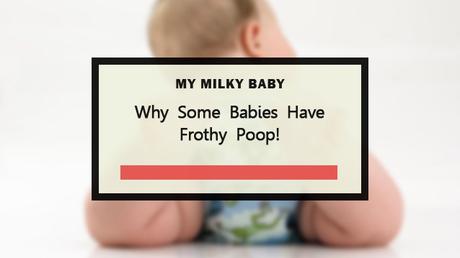
Let’s face it
Your baby is a non-stop poop factory
Aside from the time spent breastfeeding, your other hours are filled changing diapers
Every day is a new learning experience as a first time mom
And just when you think you’ve finally nabbed this whole motherhood thing, another crazy surprise pops up from nowhere!
You might be taken aback to see constant bowel changes happening with your baby, especially if your little one has frothy baby poop.
Content:
- Is My Baby’s Poop Normal?
- Foamy Baby Poop
- Causes!
- Over the Course of Time
- Conclusion
Is My Baby’s Poop Normal?
It’s normal for your baby to have a lot of bowel movements especially when you breastfeed. Most babies have six to eight stools per day but this number can vary. A newborn’s stools are the consistency of tar but will change in appearance and texture on the third or fourth day. The most common appearance of your baby’s poop during this period will be a bumpy mustard or brown color but can even be green or gray which is usually considered normal. Unlike babies who are fed infant formulas, breastfed babies tend to void poop that is more watery, curdled or creamy and less formed.
Related Article: Can I Use a Baby Fabric Softener On My LO’s Laundry?
Frothy Baby Poop
After days of diaper changes, it appears as though your baby’s poop color and poop frequency is in the range where it needs to be. But remember how motherhood hands you surprises? One day you unsnap your baby’s soiled diaper and notice something different right away. Why does the poop look like your baby just drank a whole bottle of dish liquid? Why are there so many air bubbles? If this is something you’ve never seen before, it’s bound to cause panic. If your baby frequently voids foamy green or yellow stools, it could be a sign that something’s off balance.
What Causes Frothy Baby Poop?
Breast milk is made up of two parts. The first part is a thinner substance called foremilk. Foremilk is the first thing your baby drinks as you begin to breastfeed until it’s completely emptied. The next substance is much thicker, heavier and rich in nutrients called hindmilk. If you produce a lot of foremilk or frequently switch from the right breast to the left breast when you breastfeed, it can create an issue with your baby’s digestion known as a foremilk/hindmilk imbalance. Your baby won’t be able to properly digest all the lactose in the foremilk. Stagnant lactose in the gut will start to ferment and cause your baby to get gassy. The other symptoms for a foremilk/hindmilk imbalance include:
- Frequent upchugging
- Your baby wants to nurse more than usual
- Diaper rash that doesn’t clear up easily
- Your baby is extremely fussy
Over the Course of Time
In most cases, green frothy baby poop can be remedied by limiting feeding times or sticking to one breast when feeding your baby. If the poop isn’t frothy, it just might be that your baby naturally voids greener stools. In time, you’ll get a sense of what’s normal for your child’s bowel movements.
You can also read: How to Get Baby Poop Out of Clothes Step-By-Step
Conclusion
It might not be the most enjoyable task in the world but monitoring what your baby’s poop looks like could give you an indication of your baby’s overall digestive health.
Your baby’s poop and texture will continue to change in color, consistency, and frequency over the course of several months and also when he or she starts eating solid food. Usually, voiding green colored stools in itself isn’t abnormal. However, if your baby’s poop is consistently frothy this might be an indication of a foremilk/hindmilk imbalance. If your baby nurses well, seems to be in a good mood overall and continues to gain weight, there’s probably no reason to call your pediatrician.
